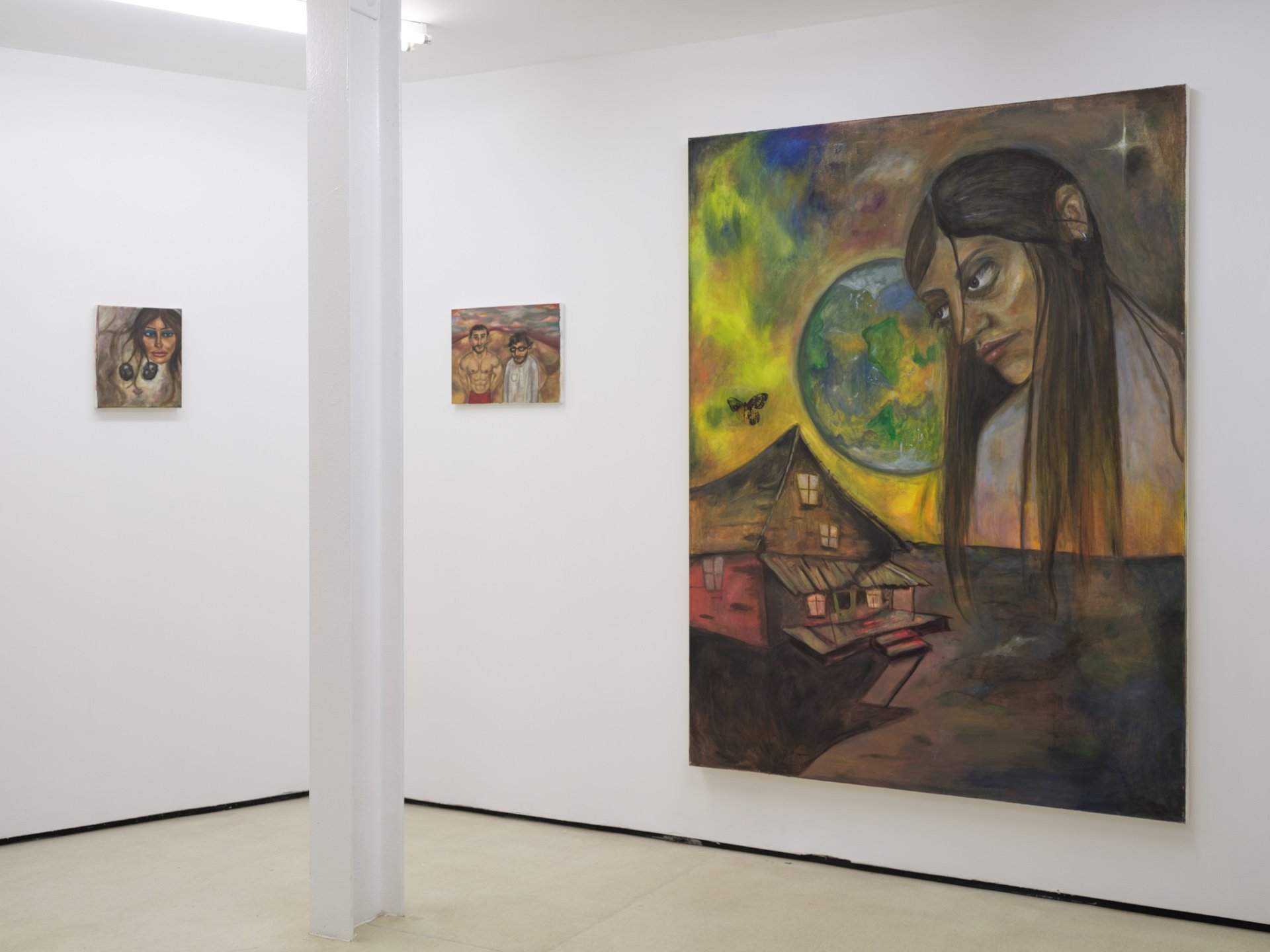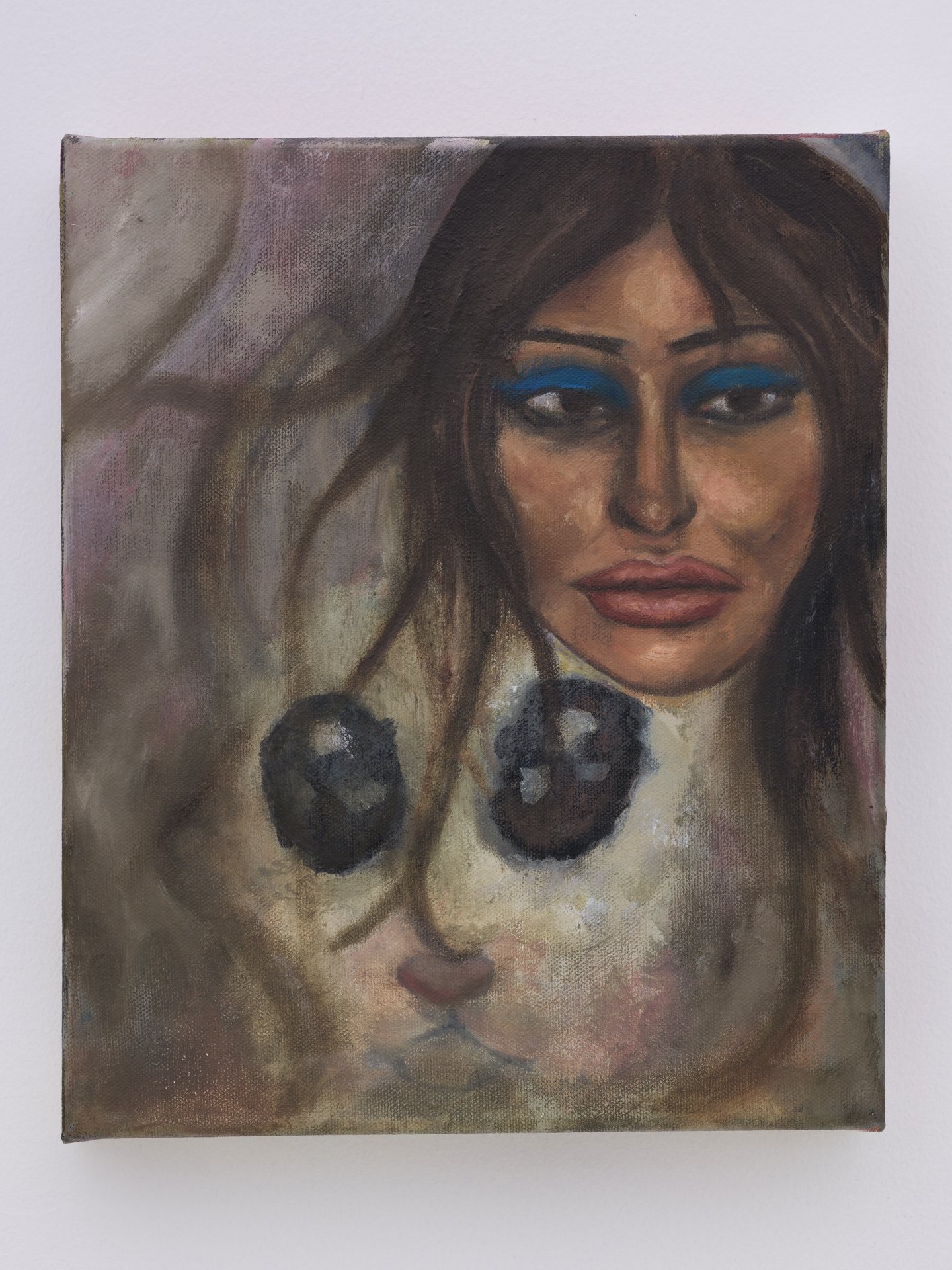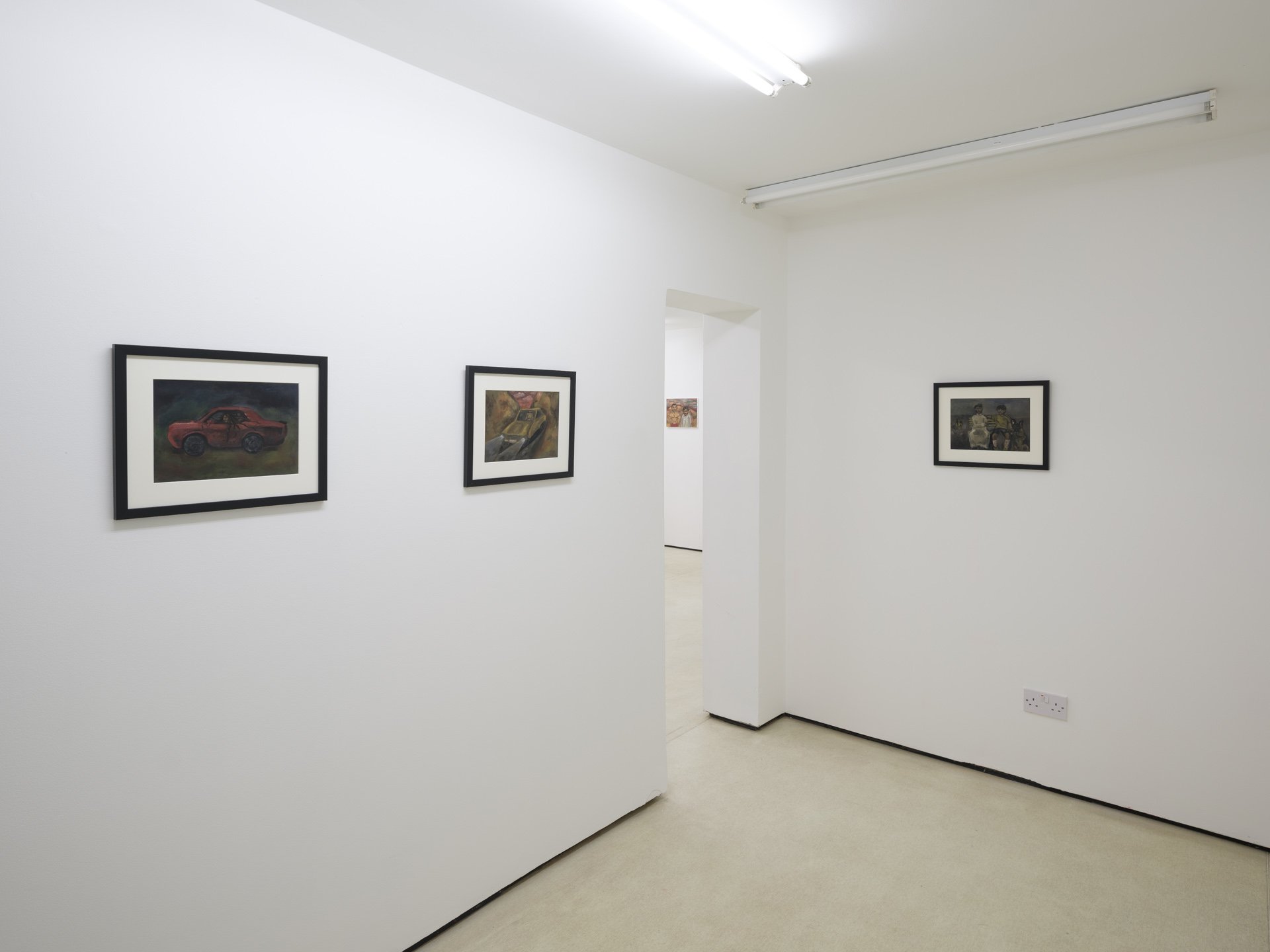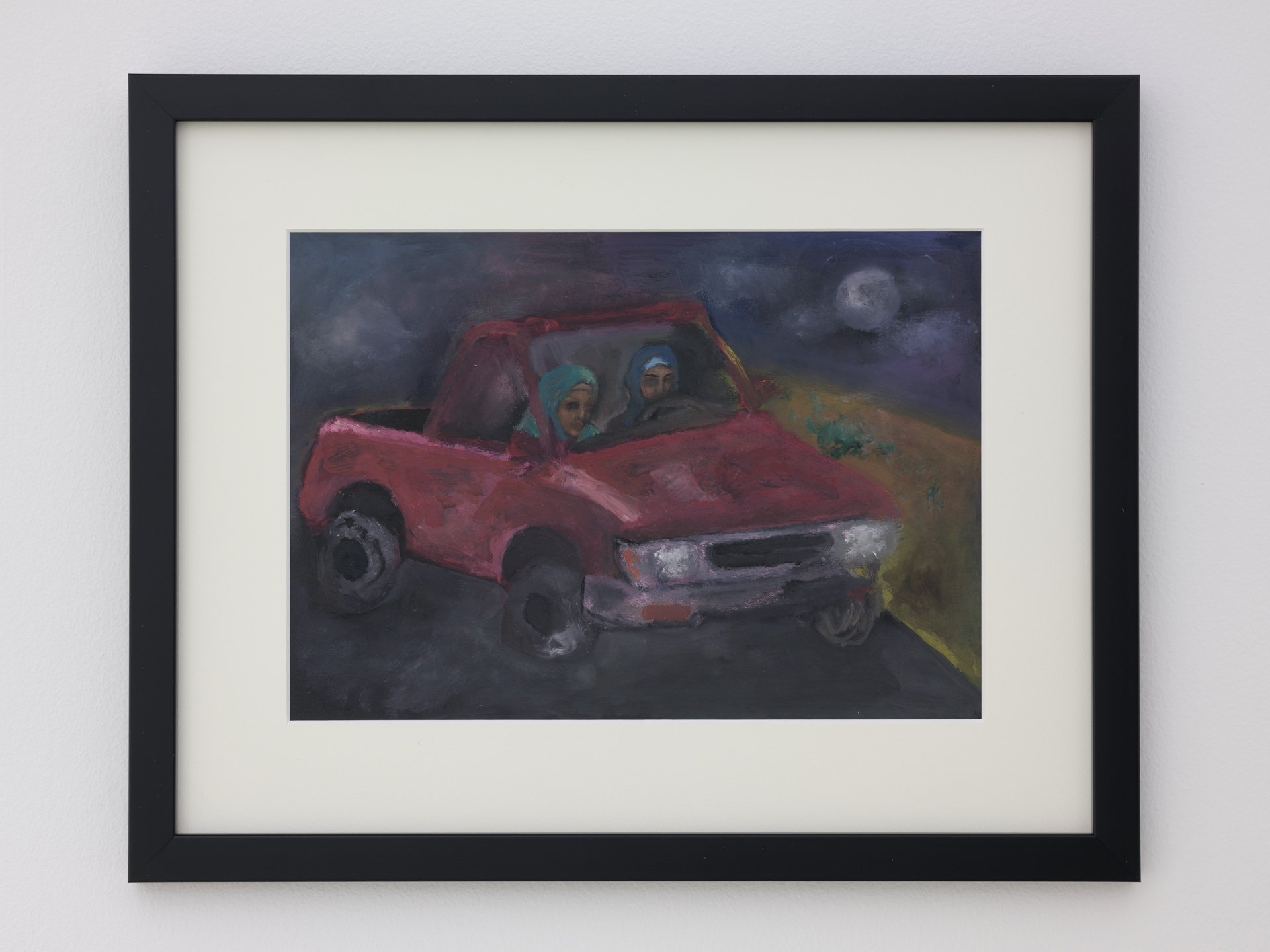SLUDGE
Isn’t the sky what I expected to become?
Does gravity hang to the bones like a registry of comings and goings?
Fanny Howe
End-Song, Night Philosophy, 2020
I write Lulua an email about thick time, Maggie Nelson's notion of time folding in on itself and stacking up - infinite but skeletal so that you can glide thru the years in real time, one long living thread in concert, like being pulled between the rooms of a derelict building teaming with ghosts. We’re discussing a show she is planning with her friends Ahaad and Tom. On Zoom they talk about animals. I listen while looking at the Saluki in one of Lulu’s paintings. She says that the dogs, gazelles, the stars, the blobs, are psychological extensions of the humans she paints - voltaic devices, often slight and preoccupied, but mostly sanguine ciphers cast to expand the field of affect in the work.
Once, in a courtyard, as we spoke, wearing matching trainers the colour of her landscapes - rust, indigo, salmon- she spoke about dreaming as an Arab woman. That conversation went in multiple directions, and is Lulua's story to tell, but to me what resonated was that, as a woman from the Gulf, she (un)naturally finds herself forced to wrestle with her own subjectivity in a late, but enduring, western, male dominated imagination, whilst simultaneously having to navigate other systems of values existing in her homeland. In Lulua’s paintings there is a radical dream logic that situates her subjects in these astral landscapes that often invert the droning western slog of men painting women; capturing an often undetected male shadow aspect, outlining the vulnerability of boys and men in a pithy and knowing manner. In her paintings she seems to reveal that which men don’t know about themselves.
(Lulua (whose Gmail avatar is the overshadowed and underappreciated 4th Beatle Ringo Starr) tells me that being an artist is the next best thing to being a musician, and that, for now, making music is part of her dreaming.)
In the paintings there is a spatial poetics, an architecture and scaffolding that asserts its own infinite and colossal thick time. In the desert our little histories hang in the balance, swallowed up by the harbour of time. In the mountains, obsessions, that so often leave us exposed and at the mercy of others, echo around and amplify on the hot zephyr. A gulf mist of teenagedom, boredom, frustrations, desires, shame.
Lulua only returned to painting in the last couple of years after a long period exploring film, and also collage, and naturally, the rupture that film instigates in temporal structure lingers in these works. At times the landscapes are saturnine and melancholy; other times they’re sort of silly, gagged up and charming. An elder Arab man, smiles out from his car, his Thawb tapping on the desert wind. The boys in her paintings are floppy haired aloof indie kids, or buff alphas whose masculinity is prone to crisis; the girls are listless and drawn, zooming through the night. There are pets, wild animals, humanoids and chimeras drifting past sequences of birthday cakes, guitars, De Niro’s Taxi Driver, and other opaque symbols. There is a self-portrait of Lulua as a floating heart ideogram, staring back at herself in the form of a clawed, doleful, stocky wolf. Everybody is either disconnected and anesthetised, or ebullient to the point of toxic rapture, all floating across the sands of time. I write ‘sands of time’ laughing at myself because it sounds equally banal and grandiose, but it is in fact somehow apt for paintings that seize an immeasurable latitude of data, stories, songs, conversations. Like Paddy McAloon spending the nights trawling the megahertz, Lulua assembles a vast, fragmented interpersonal panorama that is fun to submerge in awhile. Sometimes I wonder whether these figures are all connected, whether the elder men are in fact the boys, aged and mellowed, leaning out of the west and back into the gulf, travelling in the sludge of their own thick time.
- ED Leeson, April 2022
Lulua Alyahya
Lulua Alyahya’s paintings encompass imagery and references drawn from different worlds, carefully interwoven to pose open-ended narratives. The outcome can be a resolved inquiry or inversely a surrender to confusion. Alyahya’s work dwells on culturally familiar notions of masculinity, beauty, and coming of age. Her protagonists are often idle and melancholic, situated against dreamlike, nondescript backgrounds.














































